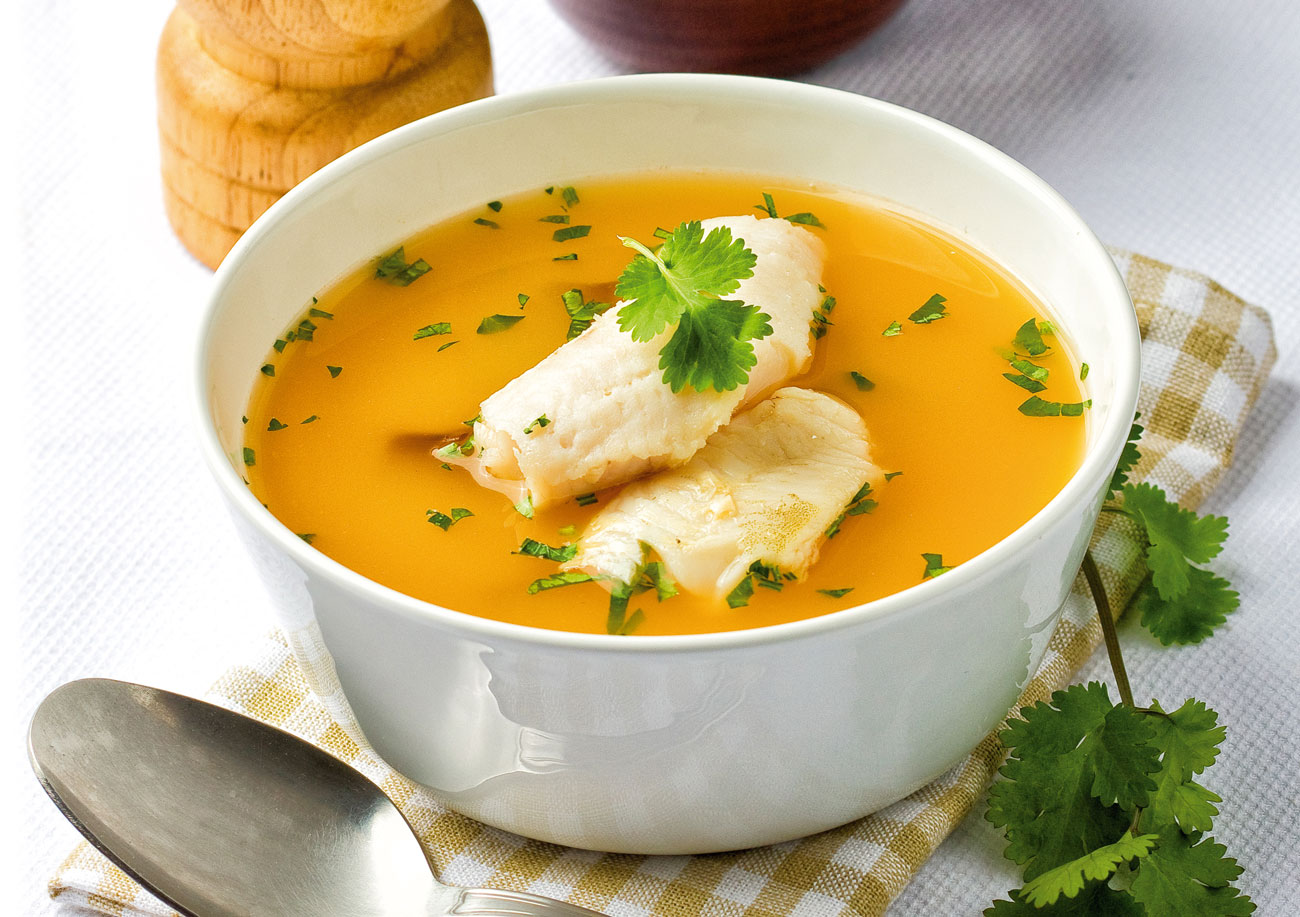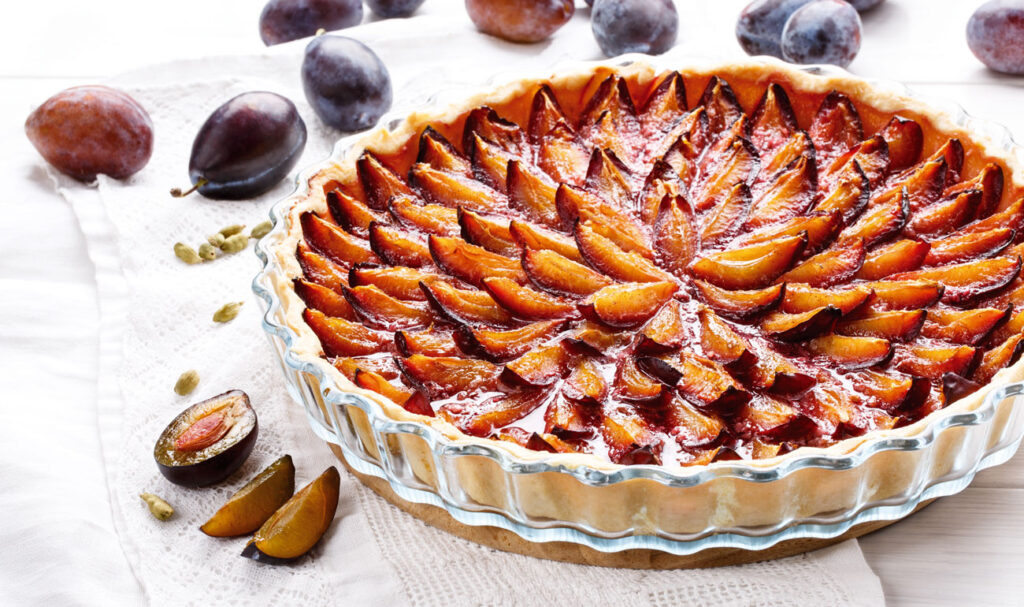
Pumpkin, Coconut & Lemongrass soup with Cod – Serves 4
The end of 2020 is finally getting closer and we can start feeling the festive spirit. After this terrible year we need, more than ever before, to celebrate and lift our spirits. I don’t want to offer any classic Christmas recipes, as I’m sure everyone has their own favourite family receipe for this special day. If you feel adventurous and want to experiment with something a bit different during the holidays, I’m sure you will enjoy these recipes and also surprise your family!
Ingredients
80ml of light cooking oil
2 large onions, peeled and sliced
2 cloves garlic, peeled and sliced
600g peeled pumpkin, diced
2 lemongrass steams
Pinch of turmeric
2 tbsp of tamarind paste
400 ml unsweetened coconut milk
700 ml water
300g cod fillet, skinned and cut into thick slice
2 tbsp cornflour
Salt and black pepper to taste
120g of butter
Preparation
1. Heat oil in a deep saucepan. Add onions and garlic and cook until soft but not coloured.
2. Add pumpkin, lemongrass (use only the bottom 3 inches, cut off the base, remove the outer two layers and discard them, finely slice the inside), tamarind paste, coconut milk, water and bring to boil.
3. Cover and simmer for 40 minutes. Puree in an immersion blender or if you using a normal blender just do it in small batches. Return to the heat and bring it back to a simmer and check the seasoning.
4. Place cod, cornflour and salt in a small plastic container and shake to coat the fish. Heat the butter in a frying pan. When it turns brown (noisette butter), add fish pieces and fry for 30-50 second each side.
5. To serve, ladle the soup in a bowl and place the cod slices on top. Serve with some crusty bread and some black pepper. Enjoy!
Recommended Wine: Pinot Noir (New Zealand)

Pheasant cooked in milk and Celeriac – Serves 4
Pheasant is a very difficult bird to get right, because it tends to be easily overcooked and dry. The taste can sometimes be a bit too gamey. I always suggest marinating the pheasant the day before its cooked. This will tenderize the meat and reduce the gamy taste. Simmering it in milk and cream with celeriac will bring out its flavour and keep the meat tender. You will also end up with an amazing sauce!
Ingredients
2 Pheasant about 1kg each (clean and gut)
2 stems of Rosemary
8 slices of streaky bacon
2 small celeriac, peeled and cut into 1cm pieces
4 tbsp of virgin olive oil
4 tbsp of port wine
600ml of milk
100ml of double cream
2 garlic cloves, sliced
Marinate (Optional)
1.5l of red wine (any red wine will do; the cheapest you can find)
2 stems of Rosemary
2 stems of thyme
3 cloves of garlic
2 bay leaves
Preparation
1. Preheat the oven at 180c or mark 4. Stuff the pheasants with the rosemary and season with salt and pepper, inside and out. Wrap the bacon over the pheasant to protect the breast and tie a string around the birds so the bacon is secure and will not fall off. Set aside.
2. Cook the celeriac in a pan of boiling salted water for about 10 minutes until a knife will go through easily. Drain and put to one side.
3. Heat a heavy-based ovenproof pan, add the olive oil and sear the pheasants to give it a light golden colour all over. Take the pheasants out of the pan and discard the fat. Add the port wine and boil to reduce for 1 minute, add the cooked celeriac, milk, cream and garlic and bring to boil. Remove from the heat.
4. Put the pheasants back in the pan and cover with greaseproof paper so the paper sits on top of the pheasants. Cook in the oven for 12-15 minutes. Remove the greaseproof paper and return the pan to the oven to cook for a further 5 minutes, so that the juice can reduce and the pheasants can get a little more colour.
5. Transfer the pheasants to a chopping board and leave it to rest for 10 minutes (keep the celeriac warm). Remove the string and, using a sharp, cut along the breastbone to take off the breasts. Cut off the legs.
6. Place the breasts and legs on a warm plate and spoon over the celeriac and creamy cooking juice. Serve with some simple steamed greens, done!
Recommended Wine: Chianti Classico (Italy)

Prune and Armagnac Tart – Serves 4
When there are no ripe fruits available, the dried prunes are good to use in a tart. If you soak them in hot Earl Grey tea, they will plump up and absorb the flavour of any alcohol you may wish to add. In this recipe I’ve used Armagnac, but you could replace it with a good brandy.
Ingredients
250g plain flour, plus extra for dusting
75g icing sugar, sifted
180g unsalted butter, chilled
2 medium egg yolks
1/2 tsp vanilla essence
For the filling
1 Earl Grey teabag
300g dried pitted prunes
4 tbsp of Armagnac
3 medium eggs
110g caster sugar
Seeds from 1 vanilla pod
Grated zest and juice of 4 clementines
5 tbsp of double cream
4 tbsp chopped blanched almonds (skinned)
1 tbsp of plain flour, crème fraiche, to serve, icing sugar for dusting
Preparation
1. Start with our sweet pastry case. Put the flour, icing sugar in a food processor and pulse until the mixture resembles fine breadcrumbs. Add the egg yolks and pulse 10 seconds, then tip into a bowl and mix briefly by hand into a dough.
2. Cover the bowl and leave the pastry to rest in the fridge for 1 hour.
3. Roll out the pastry on a light floured surface and press into a 26cm fluted, loose-bottomed tart tin to line evenly. Leave to rest in the fridge for 30 minutes.
4. Preheat the oven at 180c or mark 4. Line the tart case with baking parchment and fill with baking beans. Bake for 15 minutes until golden in colour. Remove the paper and baking beans, return the tart case to the oven to bake for further 5 minutes. Brush all over the inside of the case with egg wash to seal. Bake for 5 minutes then set aside. Keep the oven on.
5. Make the filling while the pastry case is baking. Put the teabag in a bowl and cover with boiling water. Add the prunes and leave it to soak for 15 minutes. Drain the prunes (discard the tea bag and soaking water) and add the Armagnac to them. Leave to macerate for 20 minutes.
6. Whisk the eggs and caster sugar with an electric mixer until pale, thick and doubled in volume. Add the vanilla seeds, clementine zest and juice, cream, almond and flour, mix gently but thoroughly.
7. Arrange the prunes evenly over the base of the tart case. Add any macerating liquid to the egg mixture, then carefully pour this over the prunes. Bake for about 20 minutes until the filling is golden brown and set. It should be springy and slightly puffy.
8. Cool to room temperature before dusting with sifted icing sugar and serving with crème fraiche.
Recommended Wine: Moscatel De Setubal (Portugal)
“My family and I wish all readers of Cranleigh Magazine a Merry Christmas and a Happy New Year” – Simone Conti






